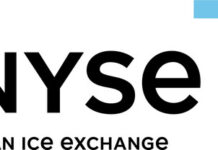That is higher than guidance of 10 per cent given in August, and the company stuck by that figure for the year. “We expect the supportive premium rate environment should continue into 2023,” QBE said.
But insurers including QBE are also facing a rash of claims this year.
It warned that “elevated catastrophe activity has continued in the second half”, with claims hitting $US880 million ($A1.32 billion) in the year to October. QBE was now assuming that it would finish the year with almost $US1.06 billion in such claims, above earlier budgeted expectations of $US962 million.
QBE’s catastrophe category includes claims from man-made events, not just natural disasters as with some other insurers. The figure released Monday included $US75 million that QBE has warned could stem from covering losses stemming from the invasion of Ukraine, including the cost of insured planes being held in Russia.
Among other costs were crop damage, with QBE customers in North America being hit with everything from drought to damage from Hurricane Ian, which risk modelling company RMS has estimated could cost the whole industry $US67 billion.
It meant that the crop combined operating ratio – a measure of profitability of insurance operations – would be around 96 per cent for crops.
That compares to QBE earlier this year saying crops combined operating ratio in recent years was typically better at 94 per cent. A ratio above 100 per cent indicates an insurer is losing money on underwriting.
QBE said the whole company’s combined operating ratio would be “around 94 per cent”. That is worse than earlier guidance of the company being able to “improve” on 94 per cent.
That number also excludes the earlier flagged $US75 million cost from QBE, like other insurers, failing to pass on discounts to customers in Australia.
QBE also said that yields on investments were continuing to run higher. That mark to mark investment negatively impacts short-term earnings results, but the flip side is they are boosted long-term.
Hunter Green analyst Mark Tomlins estimated the increased damage to crops would amount to almost $US100 million in extra costs.
He noted that QBE and other insurers were still pushing through rate rises, even though historically that might not occur for longer-term insurance products when yields are increasing.
“The inflationary environment is keeping insurers disciplined on rates,” he said.
QBE shares were down 10¢ at $12.30 during Monday trading.

































